|
SEO updates you need to know
Sponsor: Prompt Eye
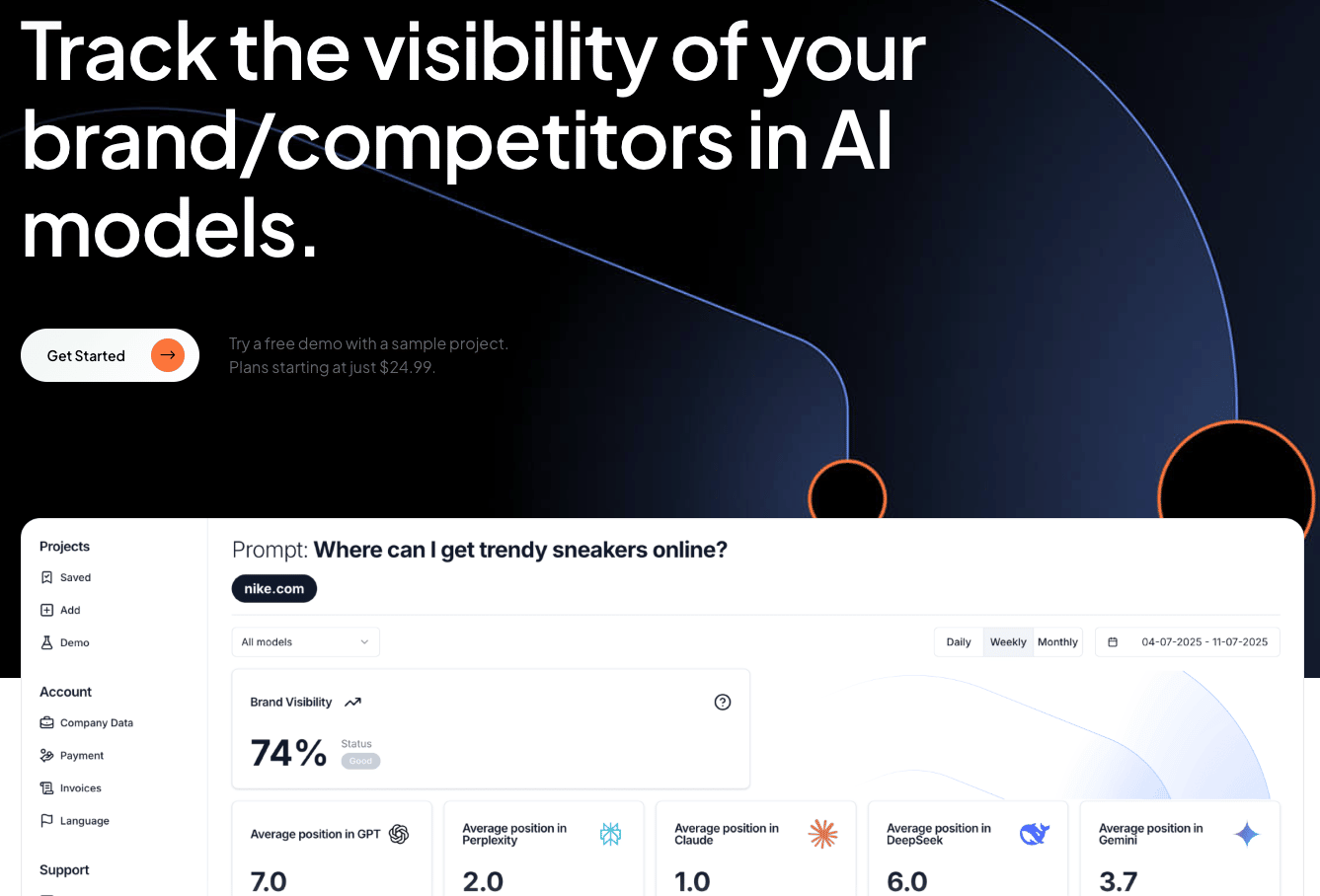
Are you tracking your AI Visibility?
Do you know which prompts you're appearing for in ChatGPT (and other LLMs), how consistently and where your competitors are?
Try PromptEye.com with a whooping 90% discount for the first month, use code: COREUPDATES90.
Or hit up Krystian Szastok on LinkedIn for a free LLM consultation call to explain how AI Visibility works.
|
Search with Candour podcast

Zero click SEO: What do we do now?
Season 4: Episode 40
In this episode of Search With Candour, Jack Chambers-Ward hosts Pablo Lopez to discuss the future of clickless SERPs and their impact on SEO.
They delve into the widespread adoption of AI in search engines like ChatGPT and Google's AI Mode, the effects on user journeys, and the shift from traditional SEO tactics to strategies focused on direct traffic and brand loyalty.
Pablo shares valuable insights on audience understanding, content strategy, and the importance of integrating SEO with other digital marketing channels.
|
|
|
This week's solicited tips:
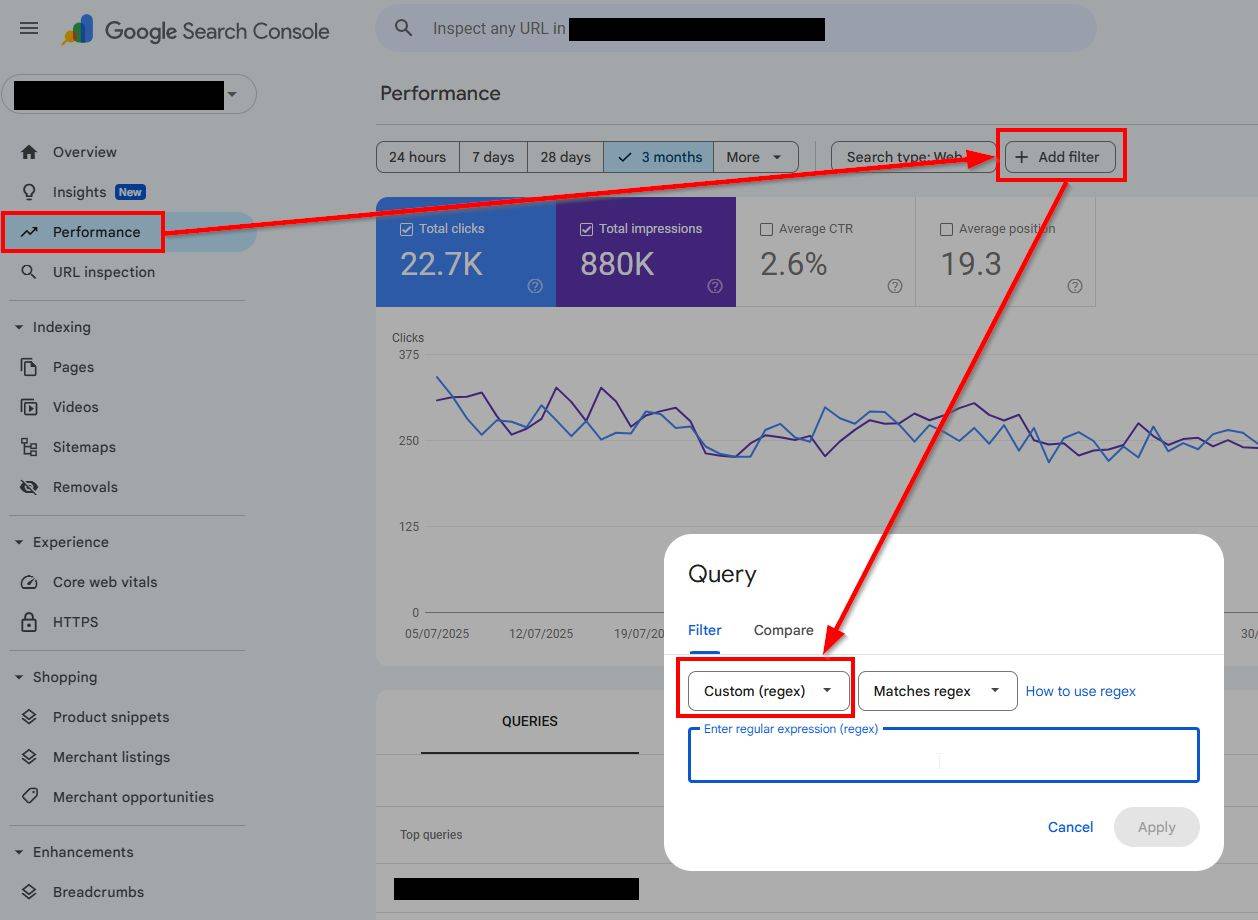
There are no stupid filters, only stupid regex
You can easily filter your GSC query data to uncover a treasure trove of query types your site is ranking for, with the following regex patterns: 🧙♂️
📃 Informational intent (Guides, tutorials, how-tos)
\b(how to|guide|tutorial|step by step|tips|tricks|ways to|best way to|learn|help|explain|understand|instruction|methods|examples|meaning of|definition)\b
⚖️ For comparisons (e.g., "best", "vs", "alternative", "cheaper"):
\b(best|vs|versus|compare|comparison|alternative|alternatives|better|cheaper|worse|cheapest|highest|lowest|top|difference|differences|differences between)\b
🛍️ Questions on products/services (e.g., "is X good?", "where to buy X?")
\b(price|cost|buy|purchase|available|best|quality|brand|reviews|ratings|features|specifications|order|discount|warranty|deal|shop|store|version|options|model|type|compare)\b
💰 Transactional intent (Buying, pricing, ;ocations)
\b(buy|purchase|price|cost|cheap|discount|deal|coupon|order|shop|store|near me|online|sale|best price|affordable|available|in stock)\b
🧭 Navigational intent (Brand-specific, reviews, support)
\b(review|reviews|rating|ratings|customer service|support|warranty|return policy|refund|complaint|feedback|scam|legit|trustworthy|experience|testimonial|problems|issues)\b
🛠️ Specific for SaaS (Tool queries from Pietro Mingotti)
\b(?:tool|software|app|system|platform|application|program|solution|portal|suite|service)s?\b
To get this:
1) Open your Google Search Console
2) Go to "Performance"
3) On the filters at the top click on "+ Add filter"
4) Select "Query"
5) Change the drop down to "Custom (regex)"
Paste in the regex and be amazed ✨
🏆 BONUS TIPS 🏆
You could also use GSC Helper extension by Stephan Czysch for preset filters (link in comments!)
Be aware that regex filters is it changes all the metrics to sum up pages - so you get greatly inflated impression counts. (Some great Ryan Jones knowledge)
🔎 Charles Meaden points out these can be used in other tools such as Ahrefs that support regex
|
If you want find some quality insights, you've got to wade through all the leaks first
Can you list the things Google considers when ranking images? If you want to level up your image SEO, I would highly recommend reading Shaun Anderson's guide to the Content Warehouse leak, and some of the insight it gave us into how Google ranks images, including:
©️ Original Source Detection: Preference is given to the earliest known source of an image using a timestamp called contentFirstCrawlTime to identify the original source.
💅 Algorithmic Aesthetics: Images are scored on intrinsic quality using Neural Image Assessment (NIMA) models for technical quality (focus, lighting) and aesthetic beauty (composition, appeal).
🛑 Anti-Clickbait Measures: A clickMagnetScore penalizes images that attract irrelevant clicks from misleading queries, fighting visual clickbait.
🗺️ Entity Linking: Objects within images are linked to real-world entities via Google’s Knowledge Graph (multibangKgEntities), enhancing semantic relevance.
🥇 Image Indexing Quality Gate: A system called “Amarna” filters out low-quality images, ensuring only credible and valuable images make it to the main index.
🔠 Text Recognition (OCR): Multiple OCR models index all text inside images, making embedded words searchable and relevant for ranking.
🎨 Image Type and Intent Classification: Images are classified by genre (photo, clipart, line art) to match user intent for specific visual types.
🖱️ User Engagement Signals: Metrics like hovers-to-impressions (h2i), hovers-to-clicks (h2c), and real-world click data influence ranking based on actual user interest and satisfaction.
✅ Trust and Professionalism Proxies: Signals such as white backgrounds (whiteBackgroundScore), image visibility on the page (isVisible), and hosting on reputable domains (codomainStrength) contribute to perceived trustworthiness.
🛍️ Commercial Relevance: E-commerce structured data (shoppingProductInformation) and licensing metadata (imageLicenseInfo) boost visibility in shopping-related searches and show commercial intent.
👮 Safety and Policy Compliance: Content is vetted through multi-model SafeSearch classifiers that analyze pixels and context to avoid unsafe or inappropriate images.
👬 Duplicate Handling: Within clusters of identical images, ranking favors the version on a more authoritative site, higher resolution, or original publication.
|
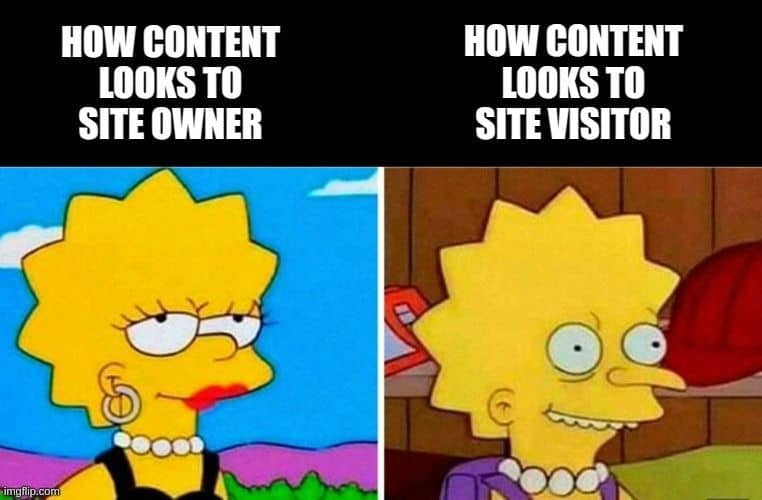
Word cannot express how much users hate bad content
You can avoid the “Well, I think it’s high quality content” discussions by setting up the most basic measures to see what users think. ⤵️
You’re always going to be biased about things you’ve had a hand in creating, so take a data-led approach to deciding if the content is good.
I’ve seen lots of abstract ways people have used to try and infer if content is good; bounce rate, time on page, engagement rates, but….
😲 Have you just tried asking them?😲
For instance, if you’re producing informational content, a simple:
“Was this article helpful? 👍👎” button at the bottom of every page.
Then link this up to your Google Analytics. 📈
While you’ll also have some bias (people more often respond negatively than positively), this will apply across the board, so you have an adequate base for comparison.
If you need to work on improving your content, you’ve got a great data point to start work on outliers that are downvoted, so you can ask:
- Why is this content not meeting user expectations?
- Are we missing some key information? (You checked AlsoAsked - right?)
- Is the current information displayed badly?
- Did they just not like what was served?
You can of course, do more qualitative assessments from there, but there is literally no downside to collecting this data upfront.
All credit to Arnout Hellemans who made me see this incredibly obvious truth a couple of years ago 🤝
|
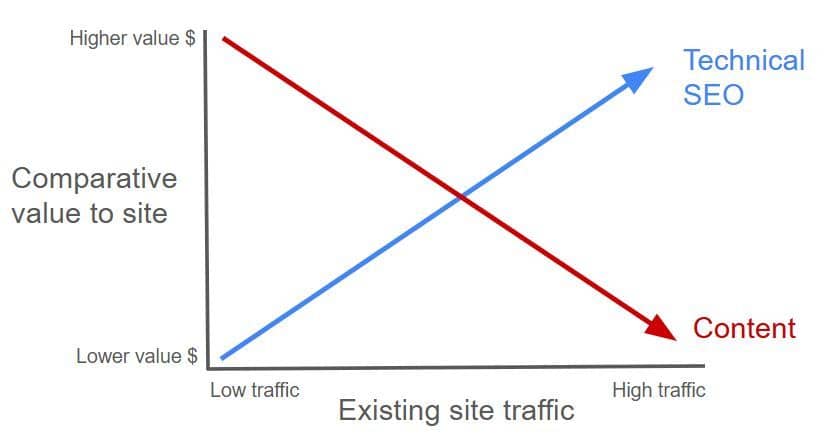
SEO is sweet because, when you do SEO, you get to make a lot of money
“We have worked on hundreds of websites for small businesses and 95% of them get zero value from technical SEO” - I saw this today and you might be surprised, I agree with it!* 🤔
🛠️ That’s because technical SEO doesn’t create value for the end user, it amplifies value that exists through technical hygiene.
🤷♂️ If you have a 6-page website with 52 visitors per month, I’m afraid it doesn’t really matter how good your schema is, or that you got 98 instead of 82 on your Core Web Vitals, technical SEO likely isn’t going to help you.
✏️ At this stage in your website’s life, you’d be much better off creating value for your users, which is usually achieved with some kind of content.
🧙♀️ Sure, you can have technical SEO in place ahead of time, just don’t expect it to work miracles at this stage - it’s not magic!
🦾 If you’ve got 50,000 visitors a month over 5,000 pages, you’ve been through 3 websites and especially if you’re doing things like digital PR, then it’s likely you’ll see some quick results from technical SEO!
🕴 Future savings are also great - if your technical SEO makes everything else for your SEO just 5% more efficient, you’ve essentially secured a 5% discount on everything else you do for life!
I’ve recreated the “meme” version of the original chart here that shows the directional relationship that is usually true between putting effort into site content or technical SEO. As a rule of thumb, your technical SEO payback grows with site traffic, whereas content decreases with it when compared to % gains.
*Yes, there are exceptions. There are always exceptions, it depends.™
|
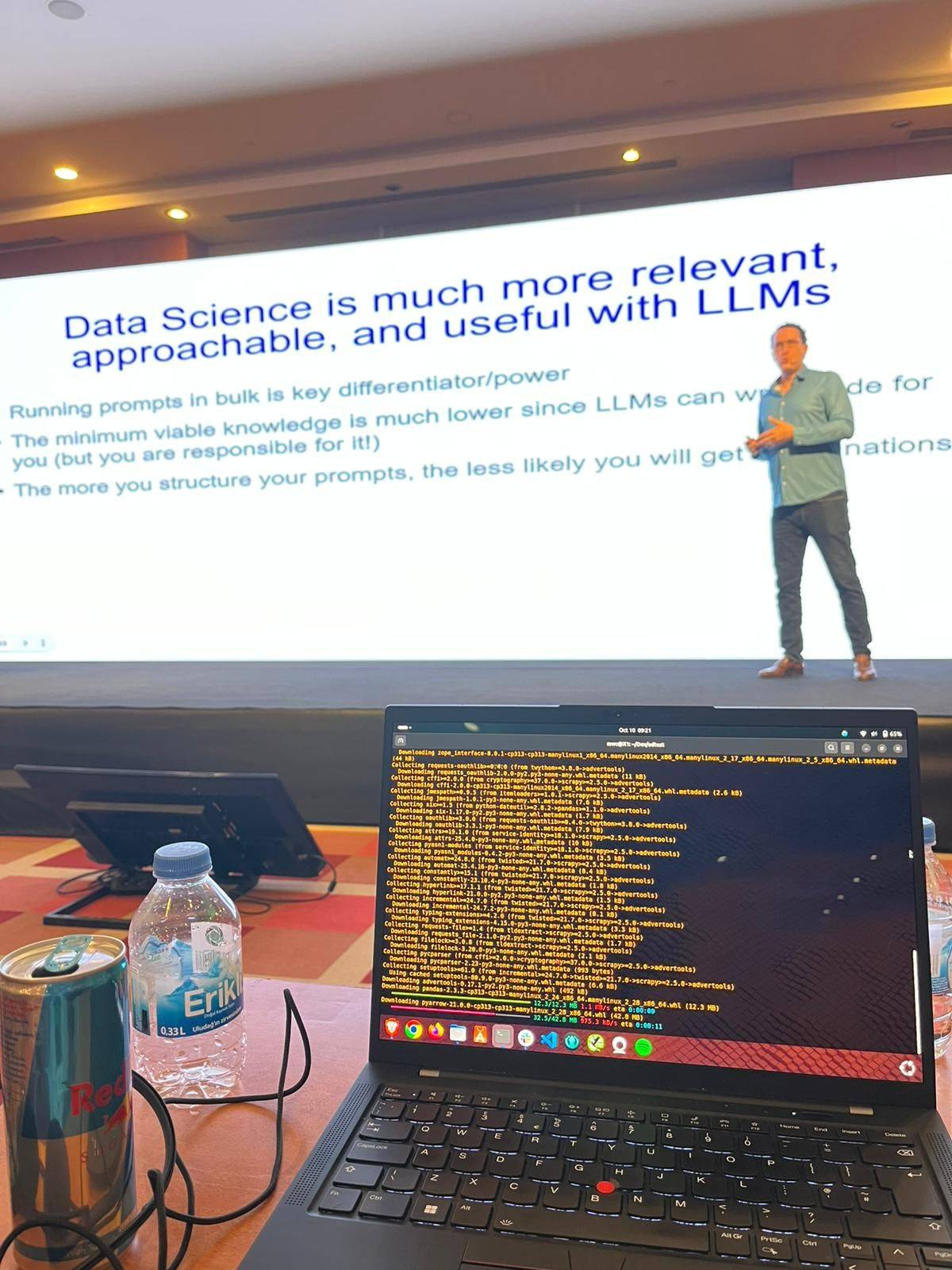
I kind of always thought Python was my best friend
If you're using Python for SEO things™ then don't be late to the party like I was and install advertools package.
I saw the author, Elias Dabbas today at Search 'n Stuff and wow, I can't believe I had slept on this (and remade the Python wheel so many times).
Some things you can easily do with advertools:
// Crawl entire websites to audit on-page SEO elements, extract titles, headings, meta tags, and important attributes for technical reviews.
// Analyse and parse robots.txt files to assess and bulk-test crawl directives.
// Download and process XML sitemaps for site structure and indexability analysis.
// Scrape and analyse SERP results to monitor keyword rankings or perform competitor research.
// Conduct text and content analysis, including word frequency and stopword filtering.
// Automate data collection, reporting, and common repetitive SEO tasks at scale.
Picture: Me watching Elias and immediately doing pip install advertools 🐱
|
Refer subscribers and earn rewards!
|
|
|